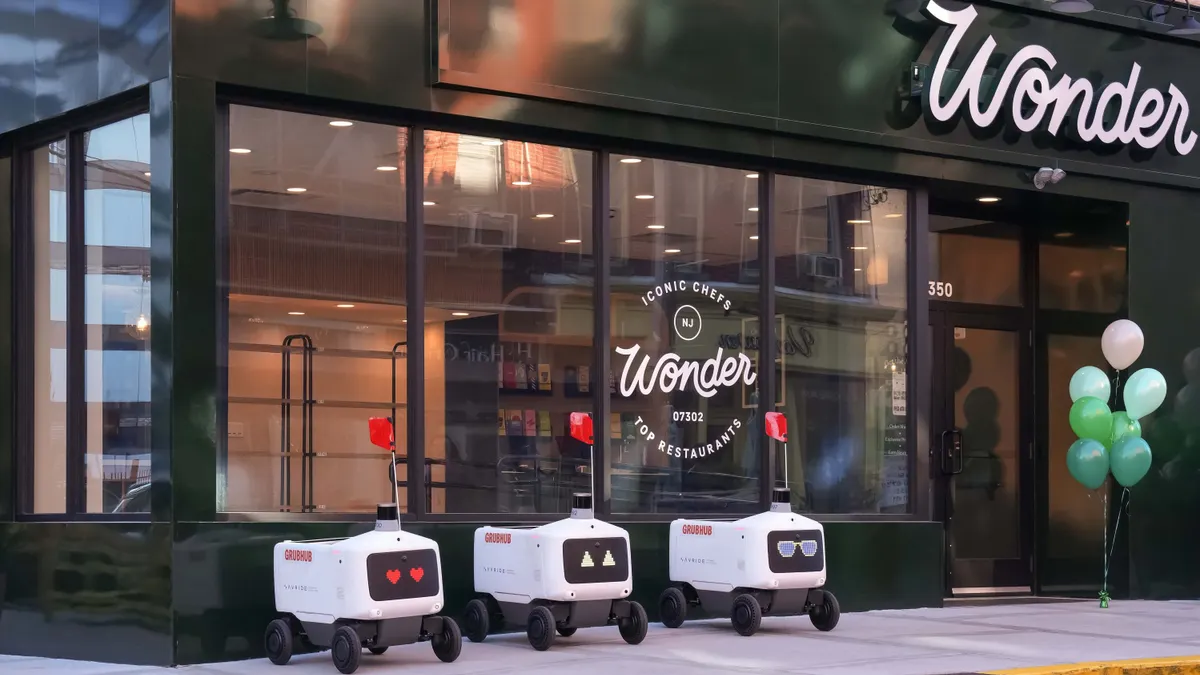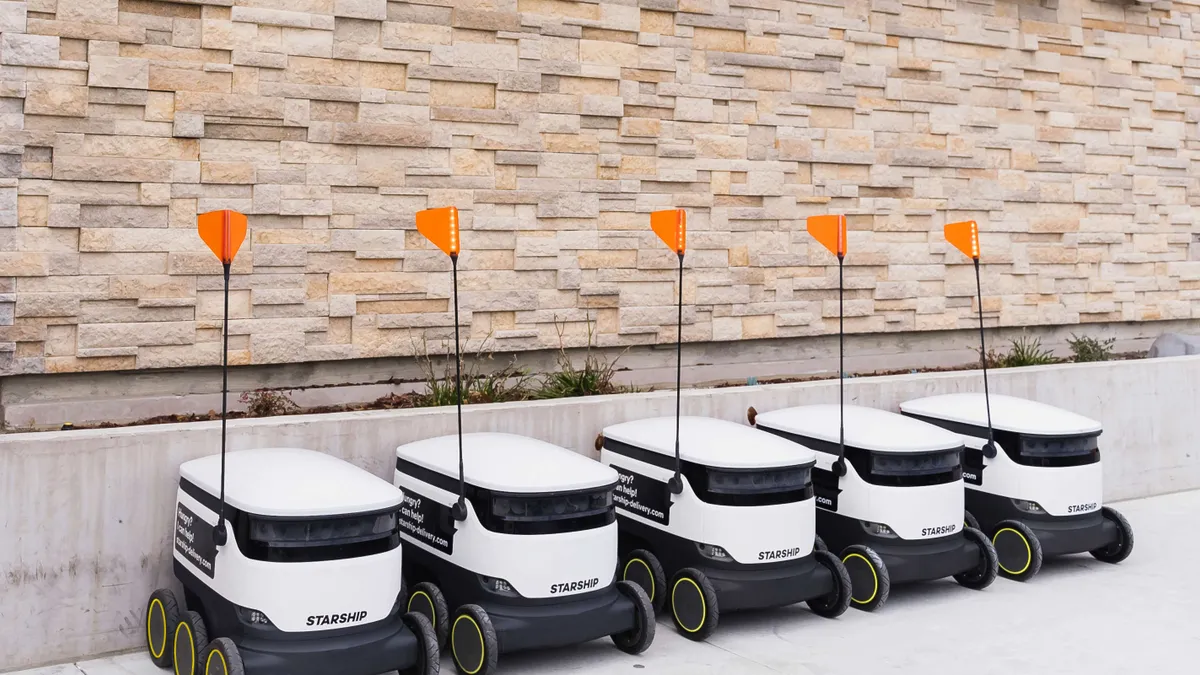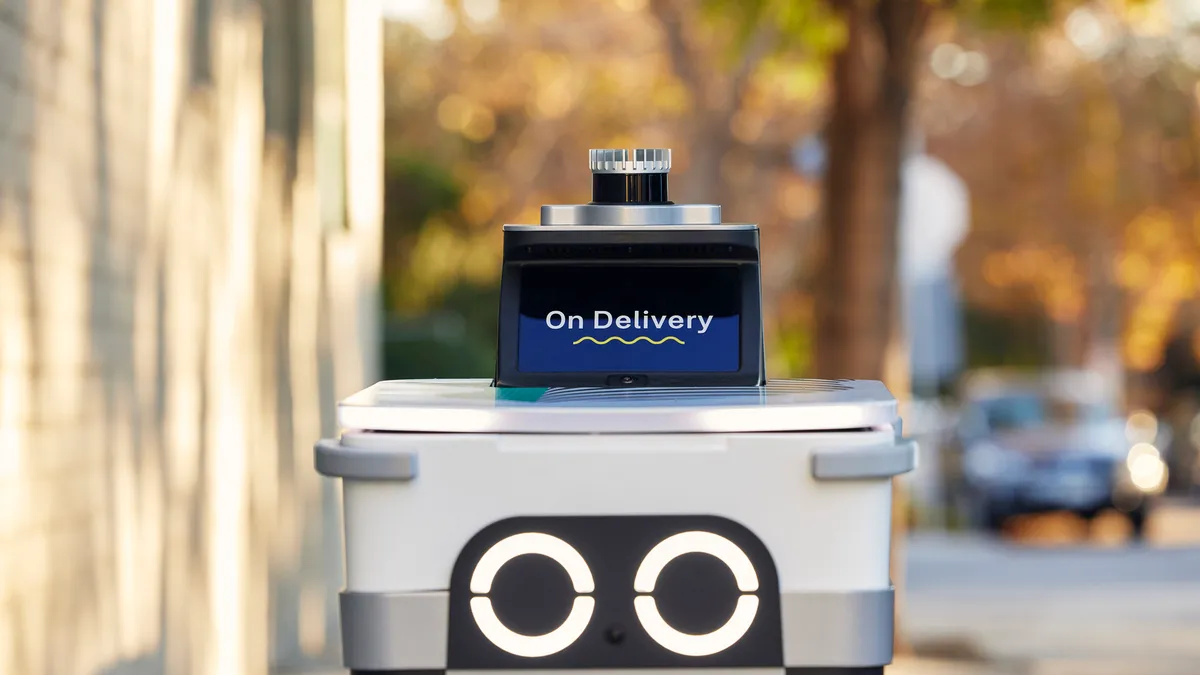In the race to capture share of stomach, full-service brands have been falling behind. Fast casuals and QSRs have been quicker to adopt mobile pickup capabilities, easy-to-use apps and websites for online ordering and to access consumers social media. This has left many full-service models playing catchup, but the trend is beginning to change.
In the last few years, just about every sit down restaurant from Chili's to Red Robin and Buffalo Wild Wings to TGI Fridays has adopted operations either with new designs, websites or mobile apps to boost off-premise sales. Even Benihana, a restaurant known for its iconic in-store experience offers delivery, today.
And those off-premise channels are growing. As of October 2019, 52% of restaurants surveyed by Gartner had four delivery partnerships, 6% didn't have any partnerships.
While the trend has been to work with more delivery providers to reach more customers, several, like Chuy's, have taken the opposite approach by signing an exclusive deal with a single platform. This strategy can help reduce overall costs, provide access to customer data and offer POS integration. Other chains, like Olive Garden, refuse to enter third-party delivery, relying on in-house takeout model to keep costs down and maintain control of branding.
Though each restaurant is approaching delivery and off-premise in their own fashion, one thing remains clear: off-premise is a strong sales growth driver.
At the ICR Conference in Orlando, Florida, last week, six chains discussed how they are making off-premise work and they anticipate it will boost sales. Read about their strategies:
Chuy's
Chuy's signed an exclusive deal with DoorDash within the last few weeks, which will roll out in the next 60 to 90 days, Chuy's CFO and VP Jon Howie said. The taco chain used to work with 15 delivery providers across its 100-plus store system. The take rate, or fees charged by marketplaces, it sees on delivery is 22% to 23% overall on 2.5% of sales, which led to $2.2 million in delivery fees paid in 2019, he said. Howie added that he anticipates the move to one provider will immediately reduce the take rate to the mid-teens.
The savings on delivery fees will be reinvested in packaging to improve food quality in transit, he said. Chuy's will also add delivery to 32 restaurants, Howie said.
Chuy's is working to convert call-in orders as well to digital ordering, which is more accurate and automatically offers upsells. Additionally, the company has been building its catering business and reached $1.5 million in the last quarter compared to $300,000 in the quarter of the previous year, he said.
Off-premise makes up 12.9% of sales currently, and management expects it could reach into the mid-teens and upper teens in the future.
Macaroni Grill/Sullivan's Steakhouse
Delivery and off-premise is essential to both because it delivers convenience and functions as a marketing tool, CEO Nishant Machado told Restaurant Dive.
To help reduce overall costs, the company keeps an eye on all of its revenue streams across each restaurant so it knows what its margins are for dine-in, catering, delivery and takeout. It will balance its marketing spend with what it knows its delivery commissions will be as well, especially since the company views delivery as a form of marketing, he said.
"If you're not efficient in running your business, I don't think you see the margin growth… in off-premise," Machado said. "The way we run our business is we know what percentage of our off-premise is delivery or carryout and we've adjusted our labor models to account for that."
Sullivan's Steakhouse, offers a slightly different menu with a broadened sandwich and burger offering and appetizers and sides, he said.
These strategies have paid off. Within the first three months of launching third-party delivery at Macaroni Grill in 2018, the company reached over $1 million in monthly sales, and it grew delivery by 30% in 2019, he said.
Red Robin
Off-premise will be a key part of Red Robin's turnaround, CEO Paul Murphy said. Off-premise grew 28% in 2019 to $168 million, and the chain plans to accelerate that business with an emphasis on third-party delivery and catering. The company believes there is significant runway with catering, which makes up about 1.5% of sales.
Red Robin works with three major third-party delivery players that were rolled out during the second half of 2019 and now makes up 5% of sales, Murphy said. The company plans to roll out a last-mile delivery program where guests order directly from the restaurant, but delivery is provided through a third-party, he said. This process will allow the chain to retain guest data while also allowing guests to use the loyalty program, he said.
To help grow off-premise, the company is developing a restaurant prototype this year that can improve the dining and off-premise experiences, he said. Red Robin will also work on a new digital platform to improve the digital ordering experience and boost order completion rates, he said.
Denny's
The company's rollout of its Denny's on Demand platform in 2017 helped the casual dining restaurant modernize and gain relevance with younger guests, CEO John Miller said. This platform allows guests to order takeout or delivery directly from the company's app or website.
Almost 90% of the company's domestic restaurants work with at least one delivery provider, Miller said. Delivery has grown 67% from when the company launched Denny's on Demand and represented 12% of sales in Q4 2019.
Delivery is skewing toward younger guests and is popular among late-day parts, but the convenience of online ordering for pickup and delivery also represents additional opportunities for young families during dinner and breakfast, Miller said.
The One Group (STK and Kona Grill)
Growing to-go sales will be an important driver of The One Group's strategy to turnaround its recently acquired Kona Grill brand. To-go sales make up about 8% of overall sales, but the industry average is about 13%, Manny Hilario, CEO and president of The One Group told Restaurant Dive. Catering, which used to be a part of Kona Grill's business years ago, will also be brought back, he said.
With its restaurants at capacity Thursdays through Saturdays, to-go offers an additional point of revenue, especially since dining room space is not as available, Hilario said, adding that Mondays through Wednesdays are not big drivers for off-premise because their dining rooms aren't at capacity. That has meant developing a bifurcated strategy where delivery and to-go might be pushed out more on the busier days.
As part of its off-premise push, the company spent a lot of time identifying packaging that doesn't get too hot or too wet. It has also provided education to host staff so they know what to do when a driver arrives to pick up an order.
Hilario said that in order to make delivery work, you have to listen to what consumers want. While delivery isn't a big focus for STK, it has done well in New York City, Chicago and Los Angeles, where the brand works with Postmates.
His brands have tried to push bundles and platters to drive toward a higher price point, but quickly found that if you force people to buy a certain amount of food for delivery, they'll find somewhere else where consumers don't have to buy as much. For his brands, he found that people prefer mac and cheese or sliders and french fries instead of large platters.
"[You] can't dictate what a consumer gets," Hilario said. "You can rationalize if you sell more at a bigger price point, it helps, but I'm not sure the consumer is really going to play that game."
Darden/Olive Garden
Darden's off-premise business, which doesn't include any third-party delivery, has grown to over $600 million, growing 17% per year and making up 17% of sales, CFO Rick Cardenas said. The company already delivers large party catering where the average order size is $350, which is much more compelling than delivering $12 lasagnas, he said. Delivery also creates operational challenges when people try to cut in line to pick up orders, Cardenas said.
"We don't really want to pay a third-party," he said. "We're still at a point where third-party doesn't make sense."


















